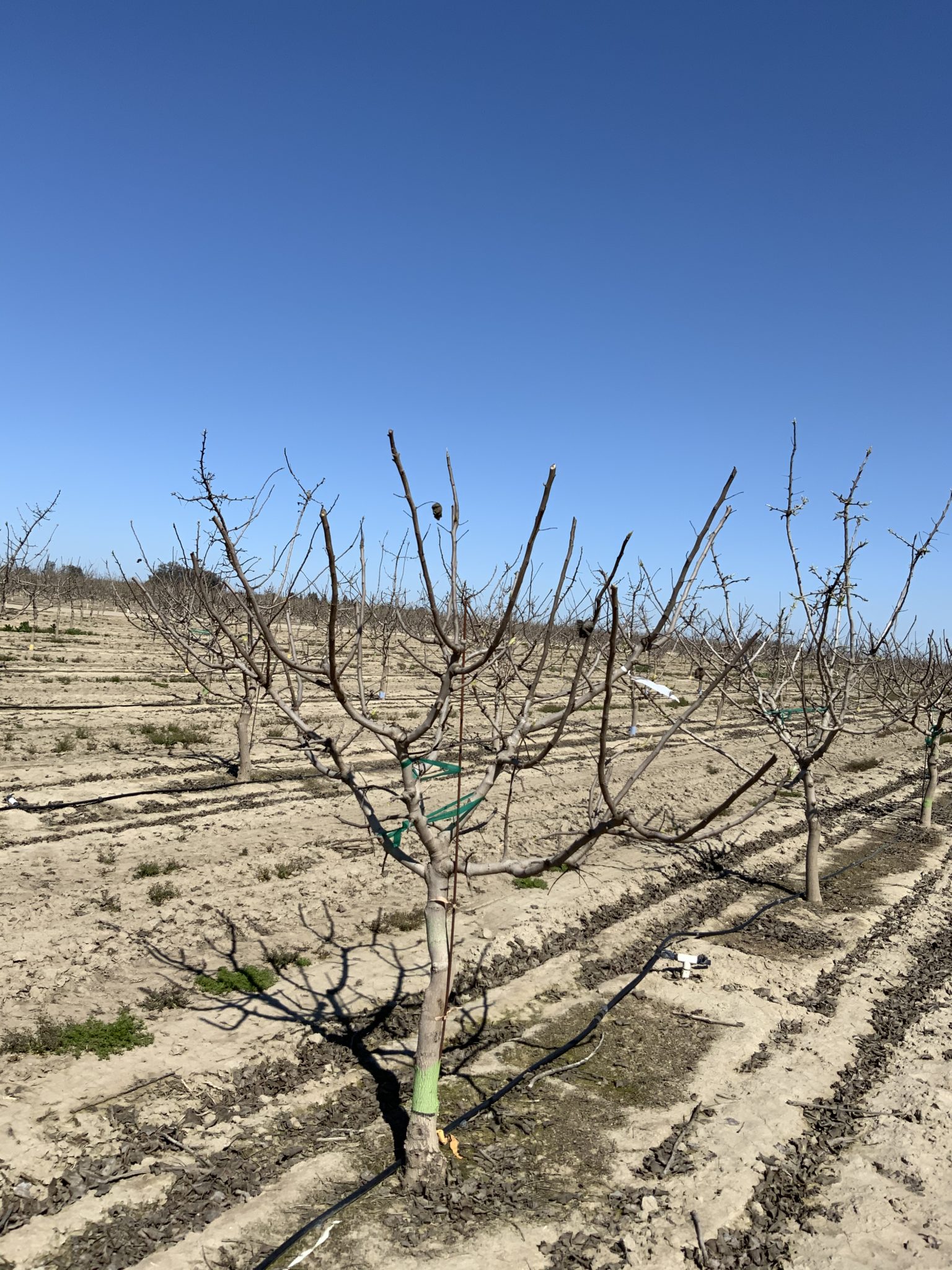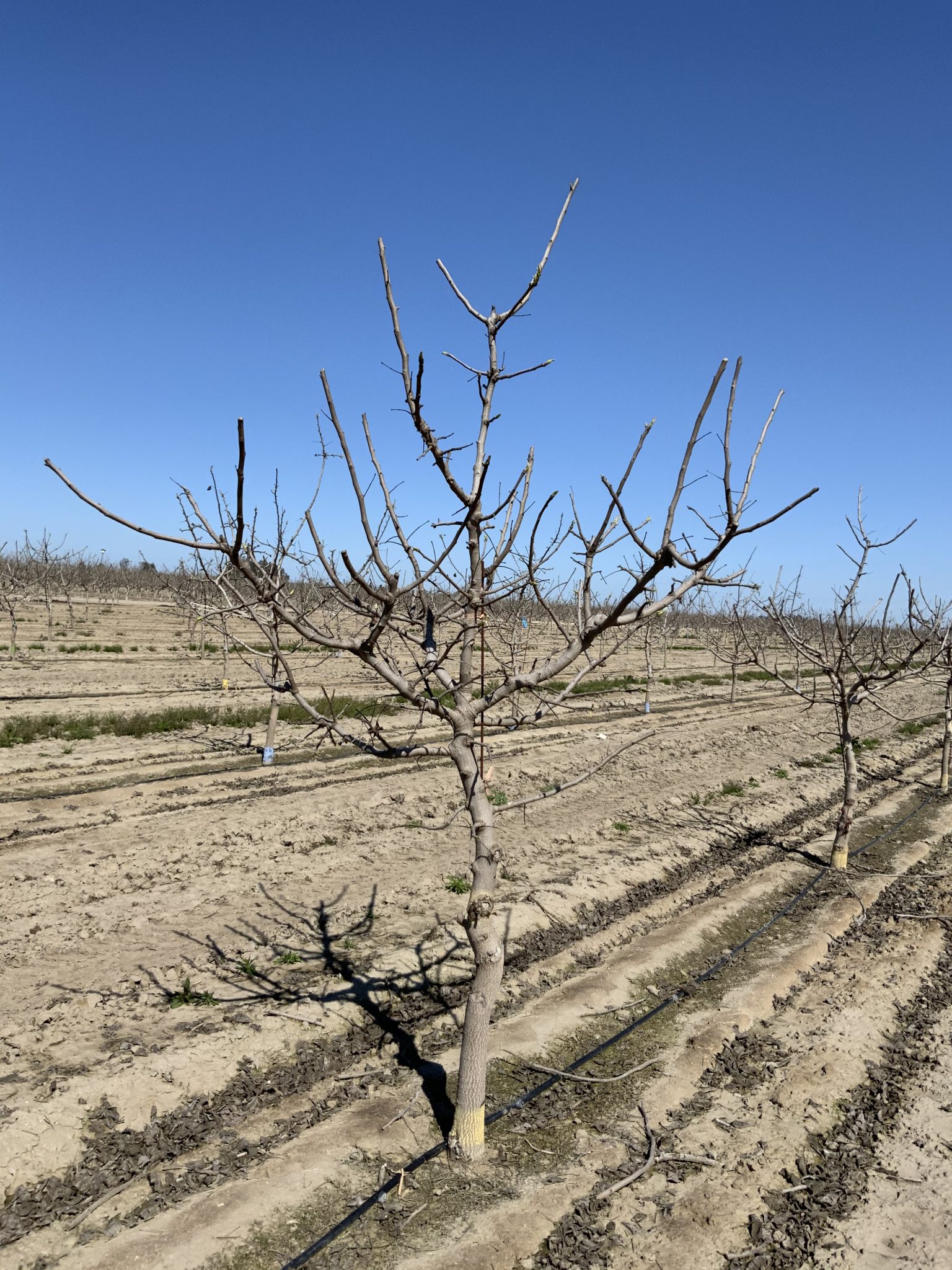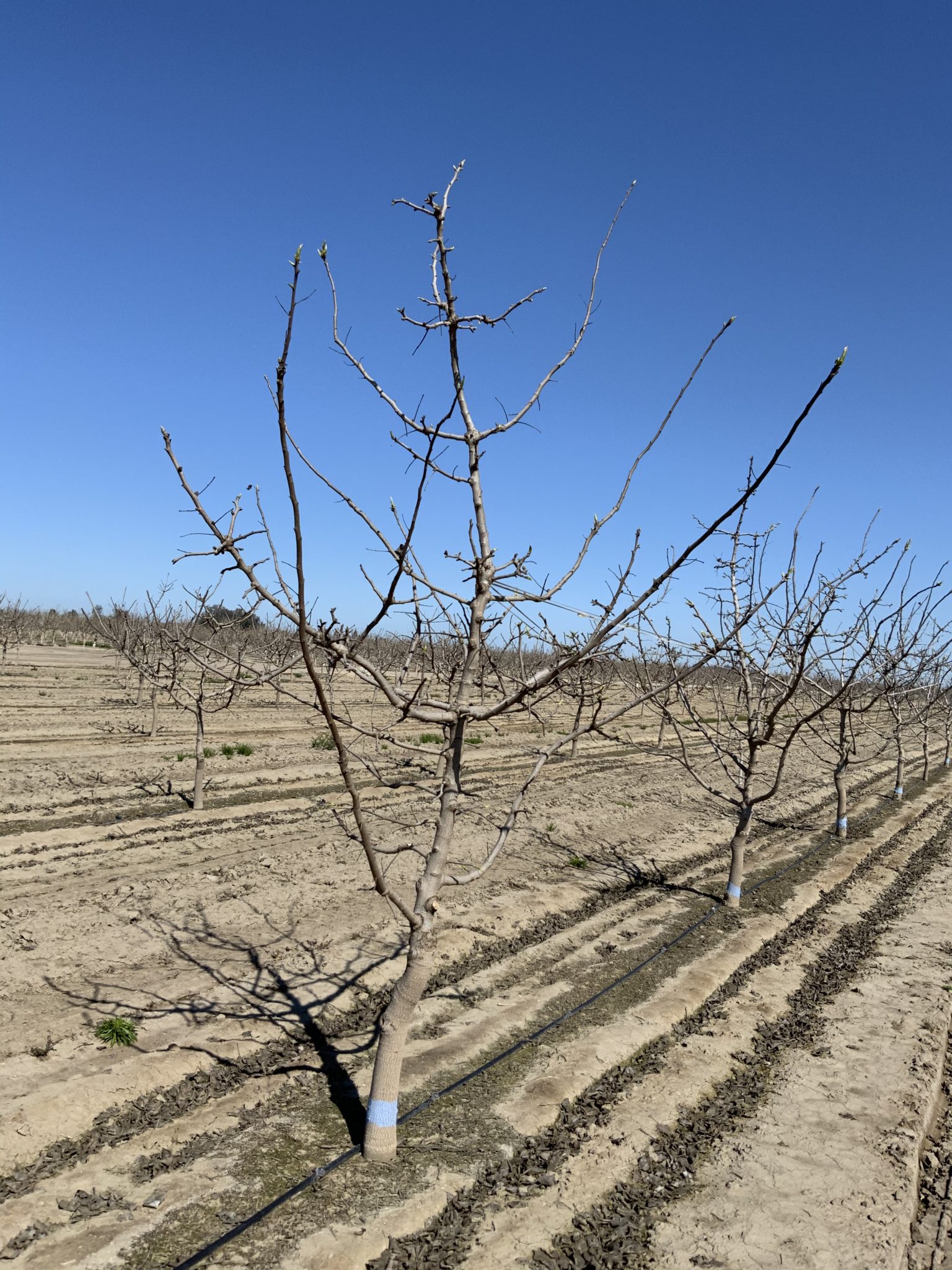
Researchers are finding that newer training systems for young pistachios may offer benefits over conventionally pruned trees, particularly for newer varieties that may not be as well adapted to conventional systems as Kerman pistachio.
Time will tell if advantages showing up in the first few years of research into alternative training systems for pistachios bear up over time. But to date, unpruned pistachio trees and those pruned using a modified central-leader training system are performing better than conventionally pruned trees, according to UCCE Integrated Orchard Management Specialist Bruce Lampinen.
In reporting on research that he and co-principle investigator Fresno County Nut Crops Farm Advisor Mae Culumber are conducting in grower orchards, Lampinen said unpruned pistachio trees and those pruned under a modified central-leader training system are yielding better in the early years than conventionally pruned trees. And what may have longer term ramifications, the research is showing that unpruned trees and those pruned on a modified central-leader training system have better branch angles, stronger connections and are less prone to breakage.
“We haven’t seen any breakage in grower orchards trained with the modified central-leader system up to seven years of age,” Lampinen said.
The research could prove valuable as growers consider alternative training systems for newer varieties, said Bob Klein, manager of the California Pistachio Research Board.
“The conventional pruning system was developed for the variety Kerman, and it wasn’t really that great for a variety like Kalehghouchi, where the limbs are more flexible,” Klein said. “And there is a question about how well it works with Lost Hills and Golden Hills.
“At this point, we don’t know how it is going to work out,” Klein added in regard to the research. “It depends on what is going to happen over the next few years. If it provides a way to get trees to bearing with less labor, and maintain the kind of tree growers want, then it will be valuable.”
In three trials, Lampinen and Culumber are comparing tree responses to three pruning techniques: conventional, where trees are headed at 43 inches at the end of their first dormancy and received in-season tipping; modified central leader, where trees were headed at 62 inches of height at the end of their first dormant season and received no in-season tipping; and unpruned. In the unpruned trees, the researchers “just planted the trees and let them grow,” Lampinen said. The only pruning done on those trees was to remove branches that were so low on the trunk they would interfere with shaking during harvest.
The researchers have three trial sites, two in Kings County, one of which was planted a year later than the other, and a Yolo County site, also planted one year after the first Kings County trial. The first Kings County site was planted to Lost Hills on PG1 rootstock. Site two in Kings County was planted to Golden Hills, also on PG1 rootstock.
Lampinen said differences in the size of rootstock, tree height and numbers of side shoots began appearing after the first year in the first Kings County site.
“After the 2017 season, we had larger rootstocks, taller trees and more side shoots emerging on the unpruned treatments compared to the conventional,” Lampinen said. “We also had more flower buds. We had .17 clusters per tree on the conventional versus 1.45 on the un-headed trees.”
Rootstock size has continued to be smaller throughout the first three years of the trial on the conventionally pruned trees, Lampinen said. “We think that probably has longer-term implications for tree growth,” he said.

Significantly Higher Crop
Early harvest figures showed significant differences. In conventionally pruned trees at the first Kings County site, the team documented that one out of every 40 trees had a crop in 2019, the first year that trees were harvested. On the modified central-leader trees, three out of every 40 trees had a crop. On the unpruned trees, 38 out of 40 trees had a crop.
As for total yields, Lampinen said they were essentially non-existent on the conventionally pruned trees. The modified central-leader trees yielded less than one pound per acre. The unpruned trees yielded 55 pounds per acre.
“The unpruned trees had a significantly higher crop early on,” Lampinen said. “I don’t know how that will hold up.”
Lampinen also noted that unpruned trees in the second Kings County site tended to be more upright than trees growing under conventional or modified central-leader pruning systems, and shoots developed at lower heights on the unpruned trees and had significantly more buds. “With good water management on these un-headed trees, you can push out a lot of buds,” he said. “We pushed out 40 or more buds on some of these un-headed trees.”
Blank zones appeared in early years on the unpruned trees in the first Kings County site, Lampinen said, but were filling in as the trees matured. “A lot of the gaps are filling in similar to what we see on walnuts,” Lampinen said. “So, the trees are straightening themselves out.”
Lampinen noted that in Australia, where growers have been using the modified central-leader pruning system for the past three or so years, growers call the period where blank spots and irregular branching appear in trees the “gangly teenage years.” Lampinen added that Australian growers use the modified central-leader system in large part to avoid breakage damage later in orchard life.
“Trees look irregular in these years and growers don’t like to see that,” he said. “But we found that they seem to be filling in really well by the end of the third leaf. The trees are pretty much straightening out on their own.”
In the Yolo County trial, which was planted to Golden Hills on nursery grafted UCB1 rootstock, the modified central-leader trees and the unpruned trees again had larger rootstock than the conventionally pruned trees, and the trees were taller. Lampinen noted, however, that the trees were taller “only because they hadn’t been pruned.
“From our experience with walnuts, the trees all reach the same height eventually,” he said, “whether you prune them or not. Pruning just keeps dwarfing them until you stop pruning.”
More Fruiting Positions
As in the Kings County sites, in Yolo County, researchers found the unpruned trees had more early fruiting positions and earlier yield potential than the conventionally pruned trees. And researchers found the trees growing under the modified central-leader and unpruned systems had stronger branch connections than the conventionally pruned trees.
“In the conventionally pruned trees, we see a lot of breakage where the initial heading cut was made and also where the first tipping cut was made,” Lampinen said. “In fact, this is the major place that we see breakage.
“Whenever I see breakage in conventionally pruned pistachio orchards, about 90% or more of that is where that first tipping cut was made,” he said.
The Yolo County trial also had more crop in the interior of the unpruned and modified central-leader trees than in the conventionally pruned trees, Lampinen said.
In measuring light interception, researchers found conventionally pruned trees had the highest light interception in the three trials, while the unpruned trees had the lowest, except in the Yolo site, where light interception in the unpruned and modified central-leader trees were similar.
“We are producing more crop in these treatments with lower light interception,” Lampinen said. “This is exactly what we found in walnuts. We find that we have higher water-use efficiency in years two through six because of the fact the trees are smaller, but they are producing more crop.”
Looking forward, Lampinen said researchers plan to continue data collection on the three original trials and start four new pruning trials comparing both Kerman and Golden Hills on UCB1 seedling and Platinum rootstocks at UC Westside Field Station.











